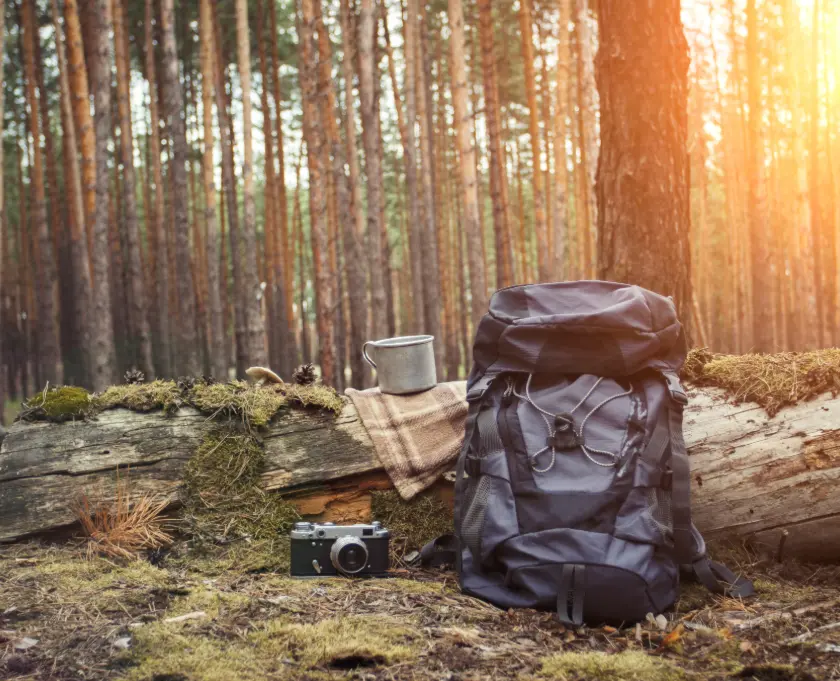What to Pack for a Hike: Your Complete Guide to Hiking Essentials
You’ve picked your trail, the weather looks good, and you’re ready to get out into nature. But before you lace up your boots, let’s talk about the single most important factor for a successful day on the trail: your pack.
Packing smart is about more than just having the right gear; it’s about being prepared for anything. Whether you’re planning a short day hike or a more strenuous trek, this guide will ensure you have everything you need to stay safe and comfortable. We’ll cover the hiking “Ten Essentials,” plus a few of our personal pro-level items.
Foundation First: The Ten Essentials of Hiking
This isn’t a suggestion—it’s a rule. The Ten Essentials are a time-tested system developed by mountaineering experts to help hikers prepare for unexpected emergencies. They should form the core of your pack, every single time.
- Navigation (Map & Compass): Your smartphone is great, but don’t bet your safety on it. Cell service can disappear, and batteries die. A physical, topographical map of your route and a reliable compass are your non-electronic lifelines. Consider learning how to use them before you’re on the trail.
- Sun Protection (Sunscreen, Hat, Sunglasses): The sun’s rays are a serious threat, even on cloudy days or in cooler weather. Don’t underestimate the power of UV exposure, especially at higher altitudes.
- Insulation (Extra Layers): Weather is fickle, and temperatures can drop dramatically. Pack a moisture-wicking base layer, an insulating mid-layer (like a fleece jacket), and a waterproof shell. Dressing in layers is the most effective way to regulate your body temperature.
- Illumination (Headlamp/Flashlight): Even if you plan a quick hike, a delay could mean you’re on the trail after dark. A lightweight headlamp is essential for hands-free visibility. Always carry extra batteries.
- First-Aid Supplies (Customized Kit): Don’t just grab a pre-packaged kit. Customize it with blister treatments, any personal medications, pain relievers, and moleskin. Being able to address small injuries quickly prevents them from becoming bigger problems.
- Fire (Lighter or Matches): A small, waterproof container with matches or a reliable lighter is crucial for an emergency fire, which can be a source of warmth and a powerful signal for help.
- Repair Kit & Tools (Multi-Tool or Knife): A multi-tool with a knife, scissors, and pliers is incredibly useful for gear repair, splinter removal, or even fixing a broken trekking pole.
- Extra Food (Calorie-Dense Snacks): Unexpected delays happen. Pack more food than you think you’ll need. Energy bars, nuts, dried fruit, and jerky are lightweight, non-perishable, and provide a quick energy boost.
- Extra Water & Water Treatment: Dehydration can sneak up on you. Carry a hydration bladder or water bottles, and a water filter or purification tablets. Never drink untreated water, no matter how clean it looks.
- Emergency Shelter (Bivy or Tarp): This may seem extreme for a day hike, but a lightweight emergency bivy or a space blanket can be the difference between a rough night and a life-threatening situation if you get lost or injured.
Leveling Up: The Pro Hiker’s Pack
Once you’ve mastered the Ten Essentials, consider adding these items to your gear list to make your hike more enjoyable and efficient.
- Trekking Poles: These aren’t just for serious backpackers. Trekking poles improve your balance, reduce the impact on your knees (especially on descents), and provide an extra workout for your upper body.
- GPS Device: While not a replacement for a map and compass, a dedicated GPS device like a Garmin can provide accurate location data even without cell service.
- Portable Charger: Powering your phone for photos and navigation is key. A compact power bank can keep your devices charged throughout the day.
- Bug Repellent: Nothing ruins a beautiful hike like a swarm of mosquitoes. Depending on the season and location, bug spray can be a game-changer.
- Whistle: A simple, loud whistle can signal for help much more effectively than your voice, which can become strained quickly.
Beyond the Gear: A Quick Word on Preparation
Packing your bag is only part of the equation. Before you step onto the trail, remember these quick tips:
- Tell Someone: Always let a friend or family member know your plan—your route, where you’re parking, and when you expect to return.
- Check the Weather: Don’t just look at the forecast for the day. Check the high, low, and chances of precipitation for your specific hiking location.
- Wear the Right Shoes: This can’t be stressed enough. Invest in a pair of sturdy, broken-in hiking boots or trail runners that fit properly to prevent blisters and injuries.
Leave No Trace: The Hiker’s Ethos
The final and most important “essential” isn’t a piece of gear, but a mindset. Follow the principles of Leave No Trace. Pack out everything you pack in, stay on marked trails, and leave nature pristine for the next person.
Happy trails! Now that you know what to pack, get out there and explore.


